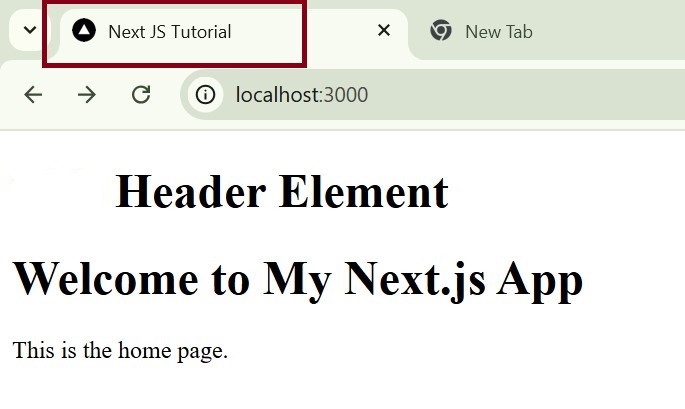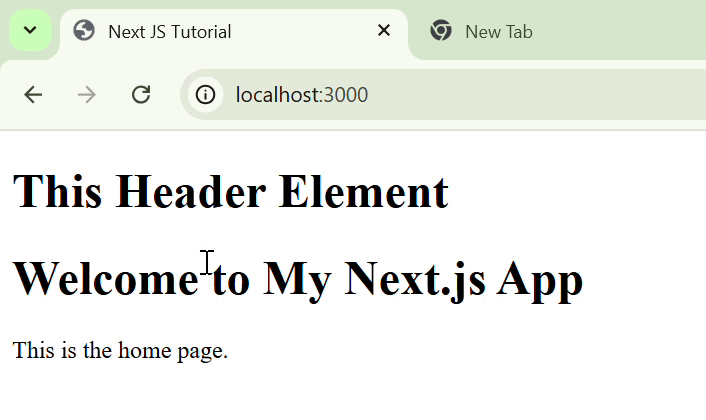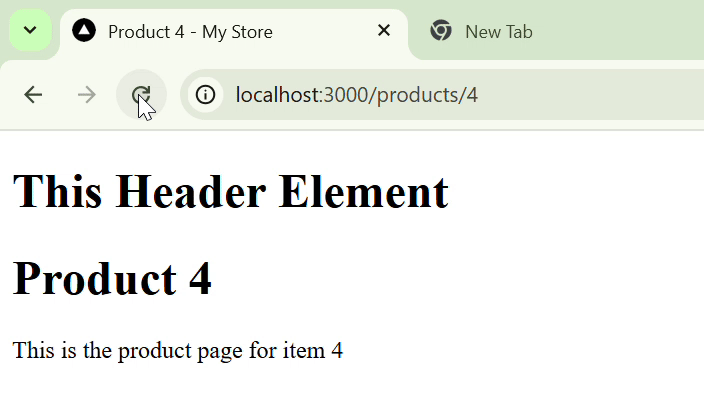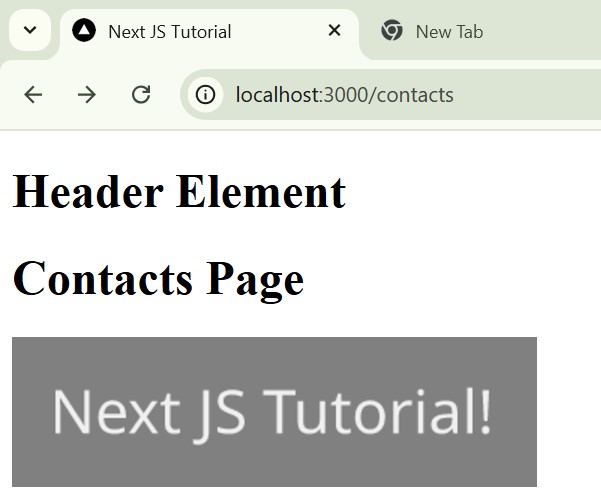Next.js - 元数据
网页的元数据存储重要信息,如网页标题、描述、标题卡图像等。适当的元数据对于更好的搜索引擎结果至关重要。在本章中,我们将解释 Next.js 中的元数据对象,如何定义静态和动态元数据,如何使用 CSS 生成元数据图像。
Next.js 中的元数据对象
在 Next.js 中,元数据对象是 App Router 的一部分,用于定义每个路由的元数据。使用元数据对象,我们可以定义标题、描述和其他 SEO 组件,即使是动态生成的路由。以下是元数据对象的语法。
export const metadata = {
title: "网页标题",
description: "网页描述"
}
Title 属性
title 属性用于设置文档的标题。它可以定义为一个简单的字符串或一个可选的模板对象。
import type { Metadata } from 'next'
export const metadata: Metadata = {
title: {
default: '...',
template: '...',
absolute: '...',
},
}
- default :此默认标题值,定义子路由的后备标题
- template :用于为子路由中定义的标题添加前缀或后缀
- absolute :用于提供忽略父路由中设置的 title.template 的标题。
声明静态元数据
静态元数据是指不依赖于外部源数据的元数据。此静态元数据对于所有用户都保持不变,并且在编写应用程序时定义。
在应用路由器中,您可以通过从"layout.tsx"或静态"page.tsx"文件导出元数据对象来定义静态元数据。layout.tsx 中定义的元数据可供布局中的所有组件访问。page.tsx 中定义的元数据特定于该组件,它可以覆盖布局页面的元数据。
布局组件元数据示例
在下面的代码中,我们使用元数据对象为布局组件定义元数据。我们定义的标题将显示在浏览器选项卡的顶部。
// app/layout.tsx file
import { ReactNode } from 'react';
import type { Metadata } from 'next'
export const metadata: Metadata = {
title: 'Next JS Tutorial',
description: 'We provide simple and easy to learn tutorial on Next JS',
}
interface RootLayoutProps {
children: ReactNode;
}
export default function RootLayout({ children }: RootLayoutProps) {
return (
<html lang="en">
<body>
<header>
<h1>Header Element</h1>
</header>
<main>{children}</main>
</body>
</html>
);
}
输出
以下是上述代码的输出。标题元数据以红色矩形突出显示。

任何组件的元数据示例
如上所述,我们可以在任何组件内覆盖布局页面的元数据。在下面的示例中,我们为"关于"页面定义了新的标题和描述。
// app/about/page.tsx file
import type { Metadata } from 'next';
export const metadata: Metadata = {
title: 'Next JS About Page',
description: 'We provide simple and easy to learn tutorial on Next JS',
}
export default function About() {
return (
<div>
<h1>About Us</h1>
<h2>Welcome to the Next JS About page!</h2>
<h4>This page is same for all users</h4>
</div>
);
}
输出
这是上述两段代码的组合输出。您可以看到,布局页面中定义的元数据是默认元数据,当我们打开"关于"页面时,它会被"关于"页面的元数据覆盖。

声明动态元数据
动态元数据依赖于动态信息,例如当前路由参数、外部数据或父段中的元数据。可以通过导出返回元数据对象的"generateMetadata()"函数来设置它。在阅读示例之前,先了解动态路由的工作原理。
基于路由的动态标题示例
在下面的示例中,我们将根据用户选择的页面为组件生成动态标题。
// app/products/[id]/page.tsx
import { Metadata } from "next";
type Props ={
params: {
id: string;
};
}
// 动态元数据函数
export const generateMetadata = ({ params }: Props): Metadata => {
return {
title: `Product ${params.id} - My Store`,
};
}
export default function ProductPage({params }: Props) {
return (
<div>
<h1>Product {params.id}</h1>
<p>This is the product page for item {params.id}</p>
</div>
);
}
输出
在输出中,您可以看到页面根据我们选择的路线而变化。

元数据图像生成
元数据图像用于创建社交媒体图像,例如 Open Graph 图像、Twitter 卡片等。当我们的网页链接在 Whatsapp、Twitter 等中共享时,将显示此图像。
简单 Hello World 图像示例
以下示例使用 ImageResponse 构造函数通过 JSX 和 CSS 生成动态图像。我们将在同一网页中显示生成的图像,以便您可以在输出中看到它。
// app/api/og/route.js
import { ImageResponse } from 'next/og';
export async function GET() {
return new ImageResponse(
(
<div
style={{
fontSize: 50,
background: 'grey',
color: '#f0f0f0',
width: '100%',
height: '100%',
display: 'flex',
textAlign: 'center',
alignItems: 'center',
justifyContent: 'center',
}}
>
Hello world!
</div>
),
{
width: 300,
height: 100,
}
);
}
// app/contacts/page.js
export default function Page() {
return (
<div>
<h1>Contacts Page</h1>
<img src="/api/og" alt="Generated Image" />
</div>
);
}
输出
在下面的输出中,您可以看到生成的带有"Hello World"消息的图像。



